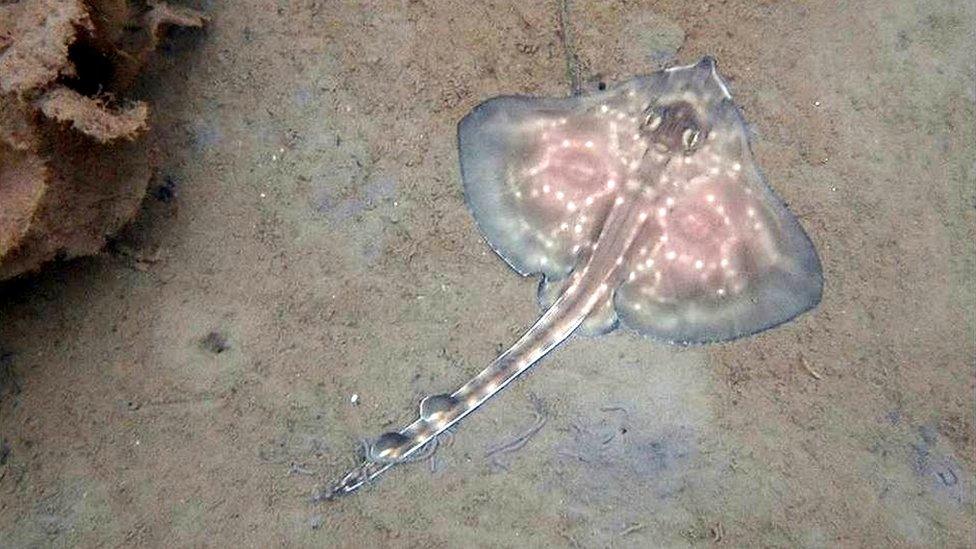Protected status for flapper skate 'nursery' off Skye
- Published
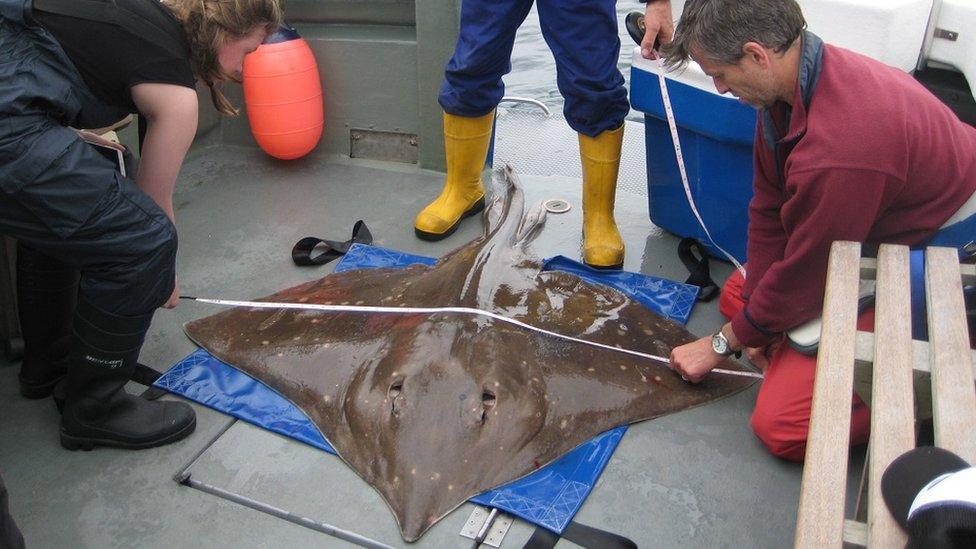
Flapper skate are members of the shark family
An area of sea where a critically endangered fish lays its eggs has been given marine protected area (MPA) status by the Scottish government.
The flapper skate "nursery" is in Skye's Inner Sound.
The fish belong to the shark family and females can grow to 2.8m (9ft) in length.
The MPA designation will come into force on 17 March and prohibit some activities such as fishing, diving and construction.
Scotland's nature agency, NatureScot, said the Skye habitat was of "national importance for the species".
Deputy director, Eileen Stuart, said: "This is great news for flapper skate, an amazing species that is listed as critically endangered - making the population we have on the west coast of Scotland particularly important for their conservation."
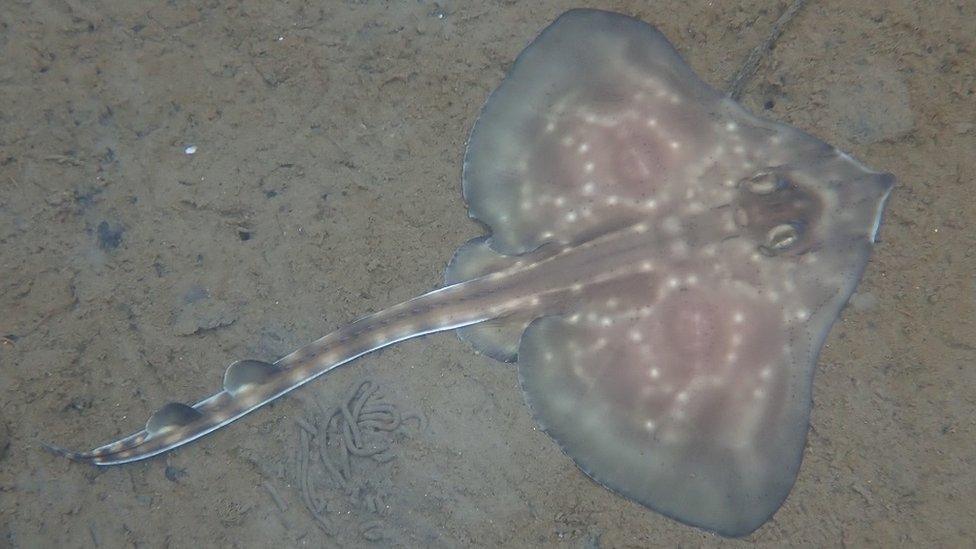
Flapper skate are listed as a critically endangered species
In Scotland, flapper skate are found on the west coast and in Orkney and Shetland.
They take more than 10 years to reach sexual maturity and produce low numbers of offspring, meaning populations recover slowly from any negative impact such as habitat loss.
The adult fish hunt for prawns, other skate and small sharks in deep water.
The Skye MPA designation will initially be in place for 12 months.
The Scottish government said any proposals to extend the designation for longer would be subject to a "full stakeholder engagement process, public consultation and impact assessments".
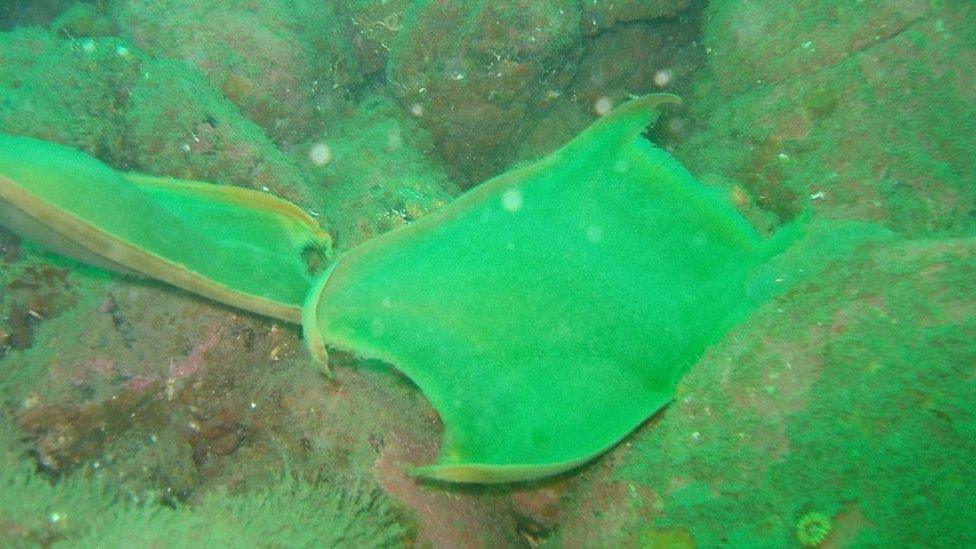
The new MPA aims to protect an area in the Inner Sound where flapper skate lay their eggs
Our Seas Coalition, which campaigns for sustainable fishing that benefits people and the environment, said while the designation was welcome in protecting an endangered fish it had some concerns.
The alliance said creel fishing, which it said "impacts a much smaller area of seabed than trawling", would be affected by the temporary MPA, while trawling would still be allowed in adjacent areas of "sensitive seabed habitats".
A spokeswoman said: "It makes sense for there to be preferential access for the most sustainable fishing methods.
"We think that environmental recovery of our seas can go hand in hand with sustainable fisheries."
Fisheries management of the Inner Sound is the subject of a legal dispute between the Scottish government and creel fishermen, who want a pilot project to be run which would see no trawling and dredging in some inshore areas.
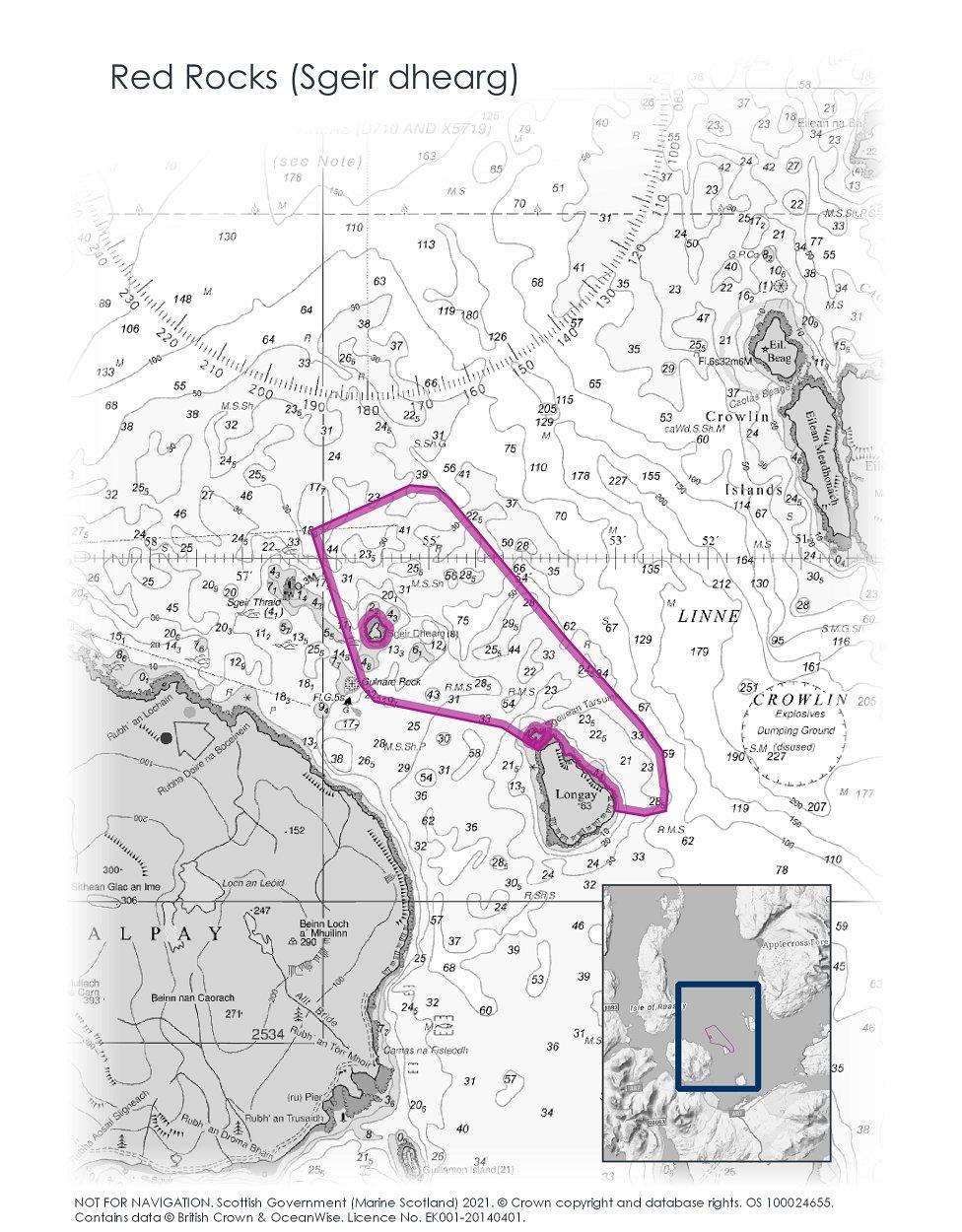
A map released by the Scottish government showing the location of the new 12-month MPA
MPAs cover others areas of sea off Scotland's coast. The designation aims to protect habitats from marine industry projects and some types of fishing.
Europe's largest MPA covers an area of deep sea off the Western Isles.
The West of Scotland MPA involves an area of more than 38,610 sq miles (100,000 sq km) in the north-east Atlantic.
Coral reefs and deep-sea sharks are among the wildlife found at depths of 2,500m (8,202ft).
Related topics
- Published9 October 2020
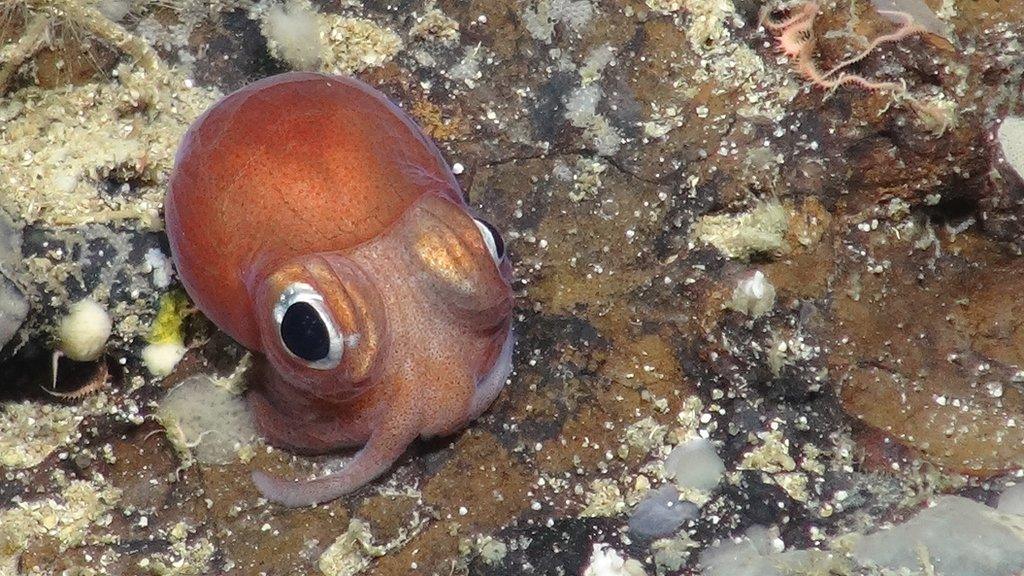
- Published2 October 2020
